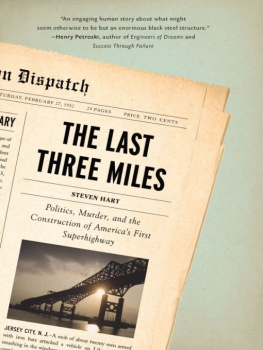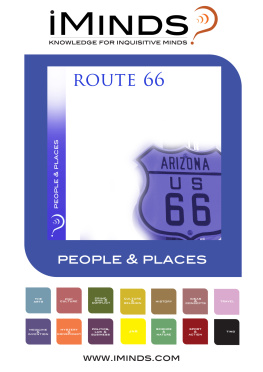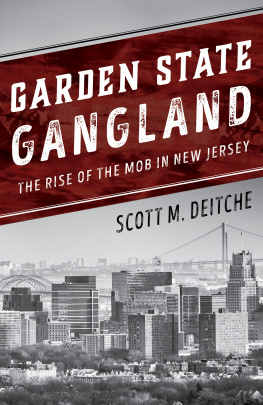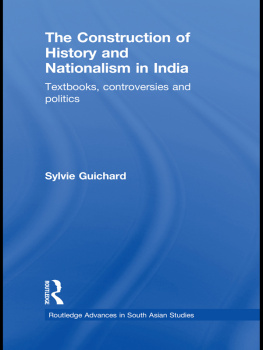Introduction
The construction of Route 25 [Pulaski Skyway] in New Jersey is an introduction into the transportation system of a new kind of link that is something between highway and railway. This new member of the transportation family may be called superhighway.
D. P. Krynine, engineer, Transactions of the American Society of Civil Engineers, 1931
This three-mile highway, reaching 135 feet into the air, is also a rare combination of artistic planning with structural solidity.... It is a thing of use, a thing of convenience. It brings cities near, bridges not two but all the states more closely.
Newark Evening News, editorial, November 23, 1932
That was a terrible time, when they were building the Skyway. Those guys who were picketing, they were fighting for their jobs. And they all got thrown in jail. My grandfather probably wouldve been thrown in jail, too, except he got shot in the back and they had to take him to the hospital instead.
Jim Bergin, ironworker
America at the dawn of the 1930s was a land of astonishingly grim contrasts. The Depression was sinking its claws deep into society, breadlines were stretching across cities, and factories that had been humming along only a year or two earlier were barely operating, or sitting idle. In a few years, whole regions of the United States would be depopulated as their inhabitants took to the road in search of work. An entire Bonus Army of destitute veterans of the Great War would gather in the nations capital to ask for early payment of money promised to them by Congress, only to be chased out by bayonet-wielding soldiers as the smoke from their burning shantytowns floated past the Capitol dome.
And yet, the heroic era of public workswhich had begun with the completion of the Eads Bridge across the Mississippi River in 1874 and the Brooklyn Bridge in 1883was about to see its high noon. At the same time, new construction techniques were allowing office buildings to become grander and taller. It might have seemed that Americas future was in doubt, but the trappings of that future were rising all over the country.
In Manhattan, excavation work on the foundation for the Empire State Building began in January 1930. On the other side of the continent, preliminary work on the Golden Gate Bridge spanning the entrance to San Francisco Bay began in November 1930, followed by the San FranciscoOakland Bay Bridge. A few months later, in a sun-blasted canyon on the Nevada-Arizona border, laborers started tunneling a new channel for the Colorado River, thus clearing the way for construction of the immense white wall of the Hoover Dam. That same year, the first in a system of spillways designed to buffer the force of floodwaters from the Mississippi River was completed at Bonnet Carre, about thirty miles north of New Orleans; a few years later it protected the Crescent City from what would have been a disastrous flood. The transformation of America from a country of railways and local roads to a nation of automobile highways and steel bridges was well under way. And amid all this feverish energy, one of the great accomplishments of the agethe complete linkage of Manhattan, the economic center of the United States, with automobile traffic from the mainlandwas about to be realized.
Though a limited underground rail system between Jersey City, New Jersey, and New York Citythe Hudson Tubeshad been running since 1908, America was now a realm of cars and trucks with no direct access to Manhattan on the far shore of the Hudson River. The first step to defeating that river barrier had come in 1927 with the opening of the Holland Tunnel, which allowed automobile traffic to pass between lower Manhattan and Jersey City. A few dozen miles to the north, the George Washington Bridge would begin taking traffic in 1931. And when the first tube of the Lincoln Tunnel opened in 1937, Manhattan became the center of a vast highway infrastructure that would remain essentially unchanged well into the next century, governing the daily lives of hundreds of thousands of drivers and shaping the way the residents of three states worked, played, and raised their children.
As the pieces of this immense transportation puzzle were welded, hammered, and blasted into place, an even wider network of concrete and asphalt was taking shape that would carry the nations drivers to this vital series of crossings. The crucial link in this network was a thirteen-mile extension of Route 1 from Elizabeth, New Jersey, that would funnel traffic from points south and west of Manhattan right to the mouth of the Holland Tunnel, and help disperse the flood tide of westbound cars and trucks that daily erupted from the tunnel and eddied on the narrow, crowded streets of Jersey City.
Most of the work on this highway extension had already been completed by the time the Depression took hold. The final and most crucial portion was a roughly three-mile stretch of elevated highway that would connect the outskirts of Newark with the edge of Jersey City. This would become the visual keystone of a new kind of road that required a new word to describe it: superhighway. Building it would take two years, fifteen lives, $21 million, a labor war, and a murder trial that marked the turning point in the long reign of Americas most powerful and ruthless political bosses.
During its design and construction in the 1920s and early 1930s, this crucial stretch of Americas first superhighway was known by several names: Meadowlands Viaduct, Diagonal Highway, High-Level Viaduct. Not until 1933, a year after it opened for public use, did it become known as the General Casimir Pulaski Memorial Skyway, or simply the Pulaski Skyway.
Though it is not as celebrated or loved as, say, the Brooklyn Bridge or the George Washington Bridge, the Skyway deserves an equal if not greater place in the public memory, for it played an even more crucial role in the development of the nations traffic infrastructureit helps cars reach those more famous bridges.
The Skyways hybrid design, combining a long elevated highway across the southernmost point of the immense swamp called the New Jersey Meadowlands with two bridges spanning the Hackensack and Passaic rivers, just north of their confluence at the top of Newark Bay, marked it as a different kind of road, one of several taking shape across the country that reflected the growth of the automobile from a rich mans hobby to a middle-class mainstay. From this point forward, major highways would no longer simply serve communitiesthey would also dominate them, shape them, and, sometimes, degrade them or kill them off entirely.
When it opened in 1932, in a Thanksgiving Day gala, the Skyway was hailed as a marvel of engineering. Newspaper editorials praised it in terms that would have been considered lavish for a cathedral or national monument; traffic planners offered calculations in which days, weeks, and months of time could now be regained by drivers who had once been mired in trafficglutted local roads; engineers surveyed the Skyways curious blend of elegance and black-steel brutality and pronounced it a thing of beauty. Much of what was said back then remains true todaythe Pulaski Skyway is a milestone in the early history of Americas effort to cope with the rise of the automobile.







